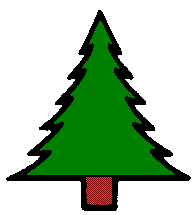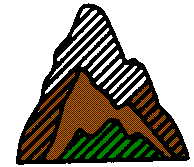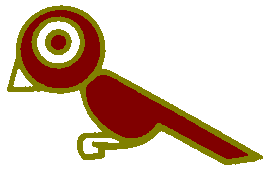|

Webelos Scout Activity Badges
Outdoor Group

As revised in the 1998 edition of the
Webelos Scout Book.
(Revisions to requirements are shown in bold
underlined type.
Deletions are shown struck through in
red italics, like this text.
To see the current requirements with no
highlighting of the changes,
Click Here




FORESTER,
GEOLOGIST , NATURALIST,
OUTDOORSMAN
Do Five of These:
- Make a map of the United States. Show the types of
forests growing in different parts of the country. Name some kinds of
trees that grow in these forests. For each type of forest, give one or
more examples of uses for the wood of its trees.
1. Identify six forest trees. Tell
what useful things come from them.
- Draw a picture to show the plant and tree layers of a
forest in your area. Label the different layers. (If you don't live in
an area that has forests, choose an area that does and draw a
picture of that forest.)
- Identify six forest trees common to the area where you
live. Tell how both wildlife and humans use them. (If you don't live in
a region that has forests, read about one type of forest and name
six of its trees and their uses.)
2. Identify
six forest plants (other than trees) that are
useful to wildlife. Tell which animals use them and for what
purposes. - Draw a picture showing
- how water and minerals in the soil help a tree grow
- how the tree uses sunlight to help it grow
3. Make a
poster showing how a tree's growth rings tell its
the life history
of a forest tree.
4.. Make a chart showing how water and
minerals in the soil help a tree grow. 5. Collect
pieces of three kinds of wood used for building houses. 6. Plant 20
forest tree seedlings.Tell how you planted them and what you
did to take care of them after planting.
Care for them for a month.
7. Describe
the harm caused by
wildfires can cause. Tell how you can
may help prevent
wildfire. - Draw your own urban forestry plan for adding trees to a
street, yard, or park near your home. Show what types of trees you would
like to see planted.
8. Make a map of the United States. Show the kinds of forests growing in
different parts of the U.S.A. Tell what important things made of wood
come from each part.
Do Five of These
2. Collect
five geologic specimens that have important uses. 1. Rocks and
minerals are used in metals, glass, jewelry, road-building products, and
fertilizer. Give examples of minerals used in these products.- Make a scale of mineral hardness for objects
using things
found at home. Show how to use the scale by finding the relative
hardness of three samples.
- List some of the geologic materials used in building your home.
- Make a drawing that shows the cause of a volcano, a geyser, or an
earthquake.
- Explain one way in which mountains are formed.
- Describe what a fossil is. How is it used to tell how old
a formation is? Find two examples of fossils in your area.
Do Four of These
- Keep an "insect zoo" that you have collected. You might have
crickets, ants, or grasshoppers. Study them for a while then
release them.
- Set up an aquarium or terrarium.
Put plants and animals that you have collected in it.
Keep it for at least a month.
- Visit a museum of natural history, nature center, or zoo with your
family, den, or pack. Tell what you saw.
- Watch for birds in your yard, neighborhood, or town for one week.
Identify the birds you see and write down where and when you saw them.
- Learn about the bird flyways closest to your home. Find out
which
what
birds use these flyways.
- Learn to identify poisonous plants and venomous
reptiles found in your area.
- Watch six wild animals (snakes, turtles, fish, birds, or mammals) in
the wild. Describe the kind of place (forest, field, marsh, yard, or
park) where you saw them. Tell what they were doing.
- Give examples of
- A producer, a consumer, and a decomposer in the food chain of an
ecosystem
- One way humans have changed the balance of nature
- How you can help protect the balance of nature
Do Five of these:
- Show your ability to tie the following knots:
- Square knot,
- Bowline,
- Clove hitch,
- Two half hitches,
- Taut-line hitch
- Pitch a tent using
Use two half hitches and a tautline
hitch to pitch a tent.
Sleep in your tent for at least 1
night on a ground bed you have put together.
- With your adult partner, take part in a Webelos overnighter or camp
overnight with a Boy Scout troop.
- Help with a two-night campout
of 2 nights away
from home with your family. Or go on two one-night
campouts of 1 night each
with your family.
- With your family or Webelos den, plan and take part in an evening
outdoor activity that includes a campfire.
- Help cook your own lunch or supper outdoors with a parent
your parents or
another adult
grownup. Clean up afterward.
- Know and practice the rules of outdoor fire safety.
- Visit a nearby
your Boy Scout camp with your den.
|